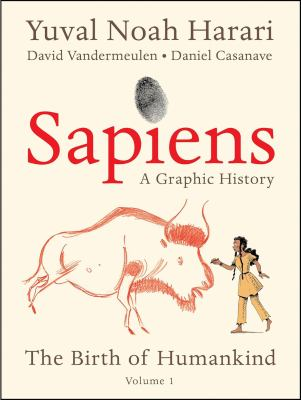Here’s how we learned history when I was in school: a dead guy (Mr. X) did something important (action Y) a long time ago (year Z). Memorize X, Y&Z - it will be on the test. Did I like history? Nope. Find it interesting? Not until years later, when great tour guides and museums and even TV shows connected the dots for me and brought people and events alive. I’m sure many of you had similar experiences.
So much of history is context and details, and there are many ways to experience it. You can read some page-turning, action-packed narrative history, or historical fiction. Don’t want to read? Listen to audiobooks, or watch a documentary or movie based on historical events. If none of these methods appeal, or you just want to try something new to you, consider a graphic novel. Similar to a comic book, graphic novels tell a story using sequential art, and the term can apply to fiction or nonfiction. Here are some well-regarded historical graphic novels:
- Maus: A Survivor’s Tale by Art Spiegelman (1991) - This was the first graphic novel to win a Pulitzer Prize. A memoir of the artist/author’s father during the Holocaust, it represents Jews as mice.
- Petrograd by Philip Gelatt (2022) - The court of the Tsar during World War I, told from the perspective of a hard-partying British intelligence officer.
- Sapiens: A Graphic History by Yuval N. Harari (2020-2025) - These three volumes retell the book Sapiens: A Brief History in illustrated form. It is Harari’s academic interpretation of human evolution.
- March: Book One by John Lewis, Andrew Aydin and Nate Powell (2013) - A vivid, first-hand account of Congressman John Lewis’ lifelong struggle for civil and human rights, stretching from his 1940s Georgia childhood throughout his political career. The three books in this series have won several awards.
- Palestine by Joe Sacco (2015) - A journalistic review of the West Bank and the Gaza Strip in the 1990s, based on Sacco’s extensive research.
- Wake: The Hidden History of Women-Led Slave Revolts by Rebecca Hall & Hugo Martinez (2021) - Hall used ship’s logs, old court records, and forensic evidence to tell the stories of these women warriors in this part-memoir, part-graphic novel.
- They Called Us Enemy by George Takei (2019) - Actor George Takei recounts the legalized racism he experienced growing up in an American relocation center during WWII.
And if your attention span (like mine sometimes) runs to shorter vignettes, try Nathan Hale’s Hazardous Tales series of graphic novels in the juvenile section. Described as “thrilling, bloody, action-packed”, this bestselling series contains titles such as Donner Dinner Party, Alamo All-Stars, and One Dead Spy. A picture really can replace a thousand words - or at least a few hundred.
New at the Library
Fiction
- Something Whiskered by Miranda James
- She Didn’t See It Coming by Shari Lapena
- The Convenience Store by the Sea by Sonoko Machida
Nonfiction
- Pacific Northwest Line Drawing by Peggy Dean
- Is It Alzheimer’s?: 101 Answers to Your Most Pressing Questions About Memory Loss and Dementia by Peter V. Rabins
- Today Loves Food: Recipes from America’s Favorite Kitchen by the Today Show family and friends
Children
- 1001 Bugs to Spot by Emma Helbrough
- In the World of Whales by Michelle Cusolito
- The Tower at the End of Time by Amy Sparkes

